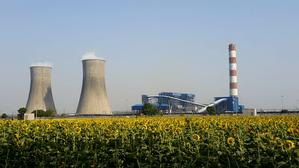Bengal thermal power plants emit 18 times more air pollution than stubble burning: report
Kolkata, Nov 17 (VOICE) Thermal power plants in West Bengal emit 18 times the 17.8 kilotonnes released from burning 8.9 million tonnes of paddy straw, as pointed out by the Centre for Research on Energy and Clear Air (CREA) in its status report.
As per the current status, none of the thermal power plants in West Bengal have implemented fuel gas desulphurisation (FGD) systems.
“If implemented fully, FGD systems could reduce annual SO₂ emissions by an estimated 64 per cent – from 313 kilotonnes to approximately 113 kilotonnes – significantly benefiting both air quality and public health,” reads the report.

ADVERTISEMENT
The report is based on the data available for 15 coal-based thermal power plants in West Bengal none of which has implemented FGD.
In the report, CREA has also done a plant-wise analysis of these 14 thermal power plants in which Farakka Thermal Power Station has been shown as the highest emitter, which could have achieved a 73 per cent reduction in emission had the FGD been implemented.
A comparison between the emission of thermal power plants in West Bengal and that from paddy straw burning in Punjab and Haryana in the report shows that while thermal power plants in West Bengal emit 313 kilotonnes of SO₂ annually, the same emitted from burning 8.9 million tonnes of paddy straw is 17.8 kilotonnes.
This means the emission from the thermal power plants in West Bengal is 18 times more than stubble burning in Punjab and Haryana.
“While paddy straw burning causes seasonal spikes, thermal power plants represent a larger, persistent pollution source year-round, underscoring the need for stricter controls on thermal power plant emissions. Yet, thermal power plants often receive leniency and repeated compliance extensions, especially for installing FGDs, whereas stubble burning is heavily penalised, with strict enforcement on farmers during the burning season,” the report pointed out.
CREA has suggested enforceable deadlines for FGD installation in these plans besides imposing penalties for delays to ensure compliance with installation targets and punishing of regular updates on FGD progress and emission reductions to encourage accountability.
According to Manoj Kumar, a CREA analyst the health and economic benefits of FGD far outweigh the costs, offering a pathway to improved public health and cleaner air.
–VOICE
src/and


Comments are closed.